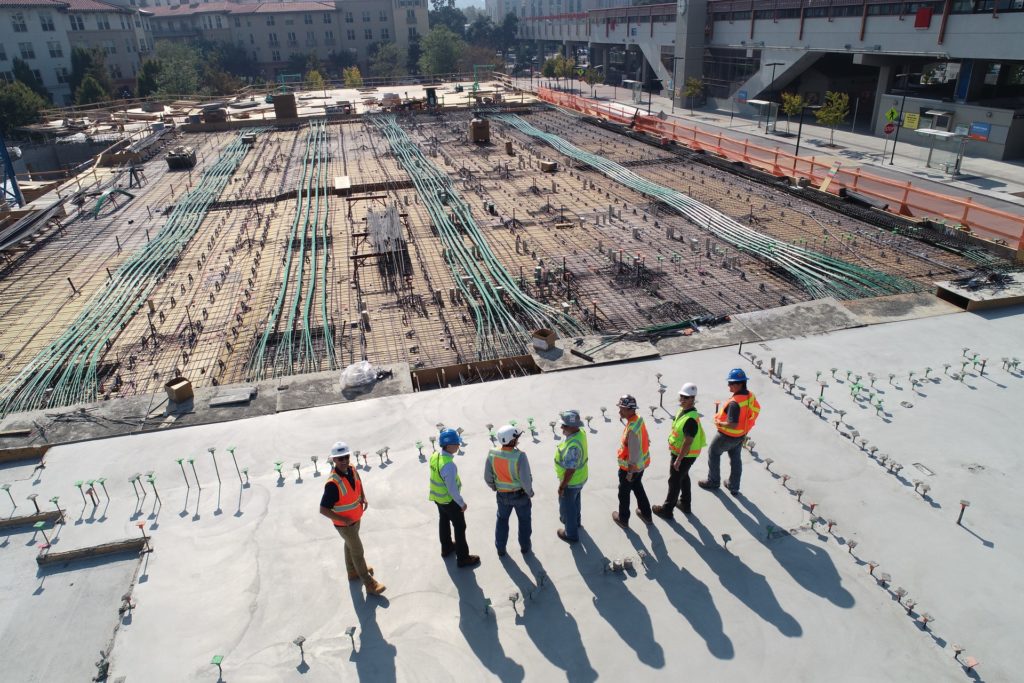In every industry, concerns around environmental impact are very much at the forefront of many businesses’ list of priorities, and for construction – a sector that is responsible for extremely significant environmental impact – this has never been more crucial. When it comes to hoardings, a fundamental element of countless building sites, an often overlooked aspect of the process is the graphics printed and installed around the perimeter of the site.
Hoarding graphics offer contractors and construction companies the opportunity to advertise their business, engage with the local community, and shed light on the future of the project in question. But what role do they have to play in a projects’ environmental impact, and how can businesses take steps to minimise this?
Why is this so important?
The elephant in the room for many construction companies is the fact that construction is an industry that is historically culpable for a significant proportion of emissions and environmental harm. This, coupled with the fact that the consumer, end user, and client are more conscious than ever about the impact their custom is having, construction is very much in the firing line when it comes to pressure for change.
Hoarding graphics – an aspect of a construction site traditionally used to communicate with the public – offer a significant opportunity for positive communication. As more construction firms step up and improve their practices, hoardings are a proactive way to demonstrate the positive steps a construction project or business is taking, which may include how the construction plans are actively working towards a more sustainable built future.
But as large format printing is an industry that can also struggle with a problematic relationship with the environment, contractors need to consider whether the hoarding graphics they purchase are being produced in a conscious manner. Fortunately, there has been significant improvement in this area in recent years – though there are several things construction companies need to be aware of when ordering their graphics.
Hoarding Graphics and the environment
As technology has improved, and forward-thinking print suppliers have embraced and pioneered new practices, this has changed. It’s important to understand how this relates to a set of hoarding graphics, and to be confident in your supplier’s ability to mitigate impact proactively, at three key stages of the process:
1. Print/Production
The printing and production of the graphics themselves is the first, and often most important, factor into whether a set of hoarding graphics could be considered ‘low impact’. By avoiding the use of traditional solvent-based inks, print suppliers can minimise impact right from the get go – this, combined with the machinery they operate, and their print-floor practices, are important things to discuss to ensure your graphics are being produced in an environmentally-mindful way.
2. Transportation
Transport is another significant factor in how environmentally impactful a project is. Forward-thinking print suppliers will factor this into their practices, and work to minimise unnecessary vehicular emissions. This can be achieved through mindful planning of transportation, but also through the use of durable materials which won’t require replacing during the construction process.
3. Removal/end of life
This stage of the process is one that is often neglected, but it’s absolutely vital to the overall impact of a hoarding graphics print project. Without processes in place to minimise impact once the graphics have been removed, printed material can end up in landfill – cancelling out the effects of any other potential positive action taken, and adding to the global landfill problem. Print suppliers should have procedures in place to ensure hoarding graphics aren’t simply thrown away after removal, and are instead sent for either recycling (material permitting) or to be processed for energy recovery.
What can construction companies do?
It’s clear that when the right processes are followed, hoarding graphics can be produced, installed, and removed in an environmentally conscious manner, and in a way that minimises impact. But what can contractors and construction companies do to ensure their own graphics follow these procedures?
The short answer is that they need to apply scrutiny to their print service provider. Contractors need to have frank conversations about the action their printers are taking both on their individual project, but also as a business more holistically, to address areas for improvement when it comes to their environmental impact.
Printing companies that have prioritised these issues should be able to provide you with the information and reassurance you need. PressOn, for example, have a variety of information on our website about the steps we’ve taken to minimise our environmental impact, and our project managers are always happy to discuss how this will relate to your own project.
A step in the right direction…
It’s true that we aren’t yet at the stage where industries like print and construction are able to say that they’re comprehensively ‘environmentally friendly’. But it’s clear that – as is the case in many industries – steps are being taken to think about and approach projects proactively and positively. When it comes to hoarding graphics, by choosing and working with the right print supplier, construction companies can rest easy in the knowledge that their prints are being produced, installed, and disposed of using the best methods and technology available – an important factor in an honest, open, and transparent approach to the entire construction process.
If you’d like to discuss your own set of construction hoarding graphics, PressOn’s project managers are always available. Simply get in touch via our contact form, and the team will be in touch with you shortly. In the meantime, you can read more about what we’re doing to minimise our environmental impact here.




